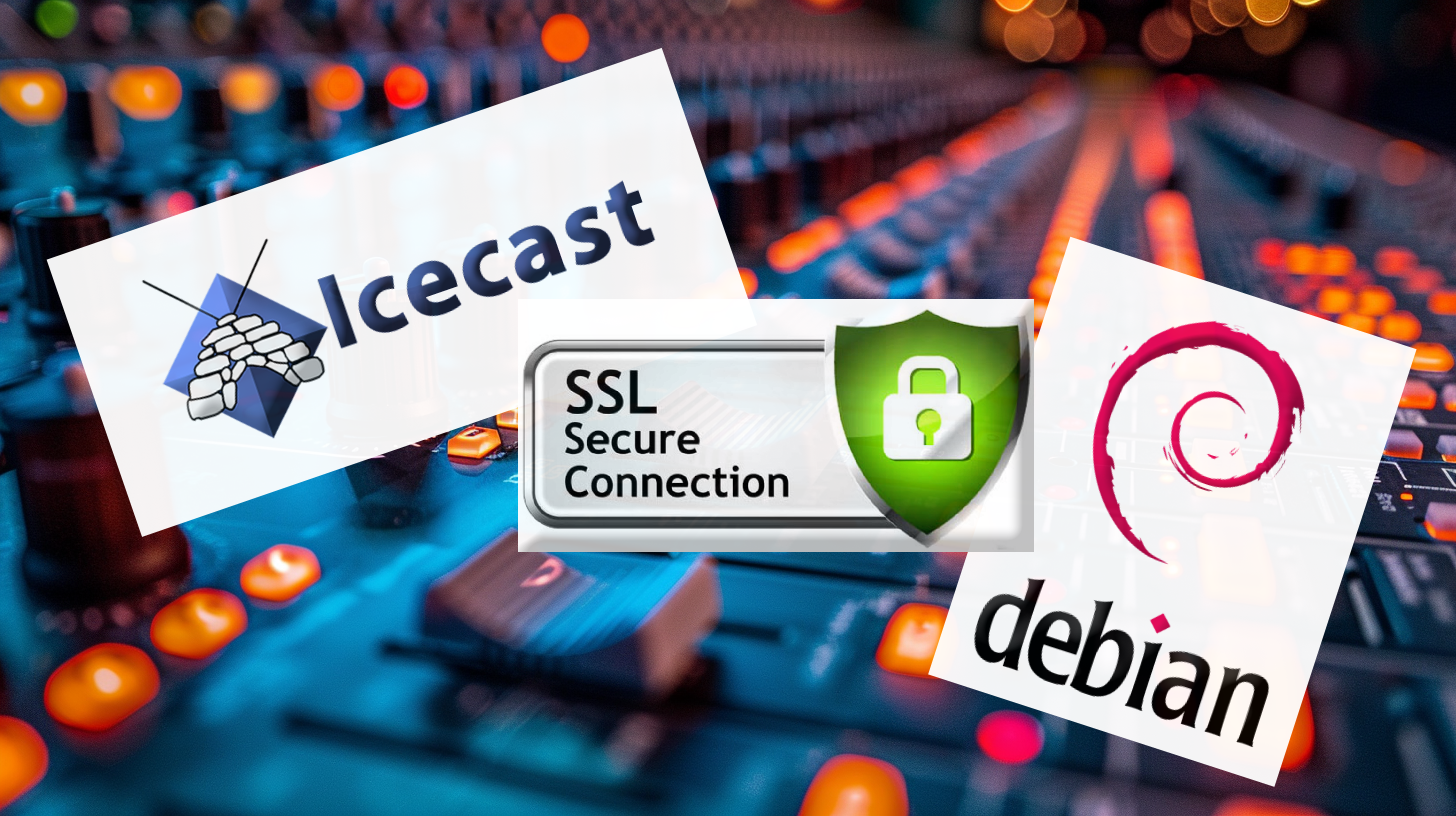
Struggling to get Icecast working with SSL on Debian 12? You’re not alone. Many face difficulties, especially when attempting to use builds intended for outdated Debian versions.
In this guide, we’ll walk you through a hassle-free method to get your Icecast streaming securely on Debian 12 with SSL, using mostly the Plesk panel interface.
Preparing Your Server
Opening the Firewall Port
First things first, let’s prepare your server:
- Firewall Configuration:
- Ensure TCP port 8000 is open is open in Plesk’s Firewall settings, as Icecast typically uses this port for broadcasting. While it’s possible to use alternative ports, sticking with port 8000 keeps the setup straightforward and hassle-free for most configurations.
Securing Your Subdomain with SSL
- Create a Subdomain:
- In Plesk, navigate to ‘Websites & Domains’ and create a new subdomain (e.g.
stream.yourdomain.com).
The use of a subdomain, not only isolates streaming traffic from your main domain, but also simplifies SSL configuration and the whole Icecast management.
- In Plesk, navigate to ‘Websites & Domains’ and create a new subdomain (e.g.
- Install SSL Certificate:
- Use Let’s Encrypt to secure the subdomain with SSL, following Plesk’s straightforward prompts.
Installing Icecast
System Update and Icecast Installation:
Access your Debian server via SSH (root) and run the following commands to update your system and install Icecast:
sudo apt update
sudo apt upgrade
sudo apt install icecast2Starting Icecast Automatically
Enable Icecast Service:
After installing, ensure Icecast starts with your server:
sudo systemctl enable icecast2
sudo systemctl start icecast2Configuring Icecast
Icecast Configuration File
Configuring Icecast correctly is crucial, here’s how you can set up your icecast.xml file:
- Open the Icecast Configuration File:
- Access the configuration file by running:
sudo nano /etc/icecast2/icecast.xmlEdit the Configuration:
- Set the
source password,relay password, andadmin passwordto secure your Icecast server and use unique different passwords.
<authentication>
<!-- Sources log in with username 'source' -->
<source-password>source_password</source-password>
<!-- Relays log in with username 'relay' -->
<relay-password>relay_password</relay-password>
<!-- Admin logs in with the username given below -->
<admin-user>admin</admin-user>
<admin-password>admin_password</admin-password>
</authentication>- Look for the section
<hostname>and replace the default value of localhost with your actual subdomain.
<!-- Change this to the hostname of the machine running Icecast. -->
<hostname>stream.yourdomain.com</hostname>
- Save and close the file.
Since we edited the file as root, we’ll need to reset its permissions, so we must correct that. In order to do so, run the following command:
chown icecast2:icecast /etc/icecast2/icecast.xmlRestart Icecast to apply your settings.
sudo systemctl restart icecast2Nginx Reverse Proxy Setup
Disabling Apache and Configuring Nginx in Plesk for SSL
In this crucial step, we’ll be setting up Nginx to act as an Icecast reverse proxy and applying the best settings to ensure the best performance for your Icecast stream.
- Disabling Apache:
- Crucially, within Plesk’s ‘Apache & Nginx Settings’ for your subdomain, ensure to uncheck the ‘Proxy mode’ option.
This action disables Apache forstream.yourdomain.com, allowing Nginx to handle all traffic, which is crucial for optimizing streaming performance.
- Crucially, within Plesk’s ‘Apache & Nginx Settings’ for your subdomain, ensure to uncheck the ‘Proxy mode’ option.
- Nginx Configuration:
- Still in the same settings area, you’ll need to add specific directives for Nginx to proxy the traffic to Icecast.
- In the ‘Additional Nginx directives’ section, enter the following:
- Still in the same settings area, you’ll need to add specific directives for Nginx to proxy the traffic to Icecast.
location / {
proxy_pass http://localhost:8000;
proxy_set_header Host $host;
proxy_set_header X-Real-IP $remote_addr;
proxy_set_header X-Forwarded-For $proxy_add_x_forwarded_for;
proxy_set_header X-Forwarded-Proto $scheme;
proxy_buffering off;
}- This configuration tells Nginx to forward all requests coming to your subdomain to the Icecast server running on port 8000. It also includes important headers and disables buffering for real-time streaming. Iceast will handle all the buffering just fine by itself.
3. Apply Changes:
- After adding these directives, don’t forget to save your configuration.
Final Steps: Testing Icecast on Debian 12
Testing Icecast Configuration
Before jumping into streaming, it’s essential to make sure everything is up and running correctly:
- Access Your Subdomain:
- Simply head over to
https://stream.yourdomain.comin your web browser. This will take you to the Icecast status page if everything is configured correctly. - This page should display the Icecast status, indicating that the server is running and reachable over SSL.
- Simply head over to
- Accessing the Stream:
- Start your streaming content through Icecast, then navigate to
https://stream.yourdomain.com/streamin your browser. - Here, you should be able to listen to your stream running, confirming that Nginx is correctly proxying the SSL-secured content.
- Start your streaming content through Icecast, then navigate to
Conclusion
With these steps, you have successfully set up Icecast with SSL support on Debian 12, utilizing Plesk for management and Nginx for optimized streaming performance. Your streaming service is now efficient and ready to deliver content to your audience.





